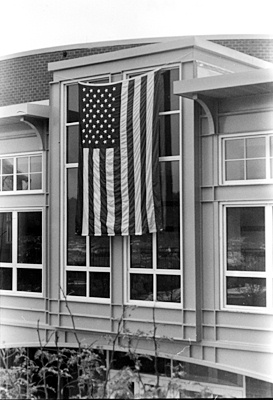All Nonfiction
- Bullying
- Books
- Academic
- Author Interviews
- Celebrity interviews
- College Articles
- College Essays
- Educator of the Year
- Heroes
- Interviews
- Memoir
- Personal Experience
- Sports
- Travel & Culture
All Opinions
- Bullying
- Current Events / Politics
- Discrimination
- Drugs / Alcohol / Smoking
- Entertainment / Celebrities
- Environment
- Love / Relationships
- Movies / Music / TV
- Pop Culture / Trends
- School / College
- Social Issues / Civics
- Spirituality / Religion
- Sports / Hobbies
All Hot Topics
- Bullying
- Community Service
- Environment
- Health
- Letters to the Editor
- Pride & Prejudice
- What Matters
- Back
Summer Guide
- Program Links
- Program Reviews
- Back
College Guide
- College Links
- College Reviews
- College Essays
- College Articles
- Back
Speak Out But Not Too Loud
“We hold these truths to be self-evident, that all men are created equal, that they are endowed by their Creator with certain unalienable Rights, that among these are Life, Liberty and the pursuit of Happiness.” From as early as 1776, people understood the value of freedom. Being tied down to a tyrannical king dictating their lives thousands of miles away led to hatred and strife, as well as a new united nation. When the Constitution was written, the Founding Fathers made sure citizens had rights that would give them freedom and happiness. However, they never imagined people would abuse their rights as they do today, giving no thought into how many lives were lost for liberty. Hearing students curse and yelling death threats at one another on a school bus is alarming enough, but when they use the First Amendment as an excuse for their behavior, it is only reasonable to enforce justice before it is too late. Hence, student expression should be contextually restricted because abusing the freedom of speech may result in conflicts and potentially disrupt the learning environment.
Many cases have been brought to the attention of the Supreme Court regarding freedom of speech, from flag burning (Texas v. Johnson) to explicit student government nomination speeches (Bethel School District v. Fraser). The ambiguous wording in the Constitution, with the only phrase pertaining to freedom of speech being, “Congress shall make no law...abridging the freedom of speech,” has instigated countless disputes for centuries (“First”). While some people believe that freedom of speech should not be restricted at all because of the First Amendment, others claim that not placing any restrictions will harm the society. Only the Constitution and Supreme Court rulings provide valid evidence for their arguments; therefore, disagreements may come up when an impulsive decision is made to restrict or not restrict student expression. For instance, in 2016, Indiana high schoolers wore Confederate capes to class, stopping their peers and yelling, “If you want to start stuff, then we’ll start stuff too,” and “The South will rise again” (Rosen 1-2). Throughout the Civil War, Indiana was a Union State, and many still remain firm in their beliefs that caused them to be opposed to the South. Consequently, Indiana students threatening their peers with Confederate flags sparked contentiousness throughout the state, as well as the rest of the nation, and what may have started out as an innocuous joke was perceived as a threat. Many people, mostly students, were disturbed from their classes and believed the Confederate flag should have been banned immediately. They claimed that the Constitution, however vague it may be, should not protect disruptive students. Their pleas were not fulfilled immediately, for the 1969 Supreme Court case, Tinker v. Moines, ruled that freedom of speech applied to public school students. Fortunately for some, the statement could be overruled “if the expression of free speech disrupt[ed] learning environments in schools” (Rosen 2). With the complaints from students as evidence, the administrators reevaluated the situation and placed a ban on Confederate flags in the high school. However, even though there is common ground between situations in which restrictions can or cannot be placed on speech, it is crucial to remember that “the focal point...is disruption, not whether or not you like the symbol” (Rosen 2). While disruption could overrule the First Amendment, using subjective reasoning to support a ban would only cause more strife and violate the First Amendment. Therefore, even though restrictions should be placed on disruptive students who take their freedom of speech a step too far, the First Amendment has not been abolished, merely providing a more concrete meaning that extends towards students in the twenty-first century.
Although the First Amendment affords citizens of the United States the right to have freedom of speech, student expression in public education should be contextually restricted. Students should not be given a “free pass” when they threaten their peers because of their First Amendment rights. However, to prevent violating the Constitution when dealing with contentious issues regarding the liberties of the nation, one should keep an objective mindset. If students take speech so far in the twenty-first century, how far would they take it in a decade? How abusive would they be of their other rights? Hence, “such is now the necessity which constrains [the nation] to alter” their perspective on students’ growing acceptance of foul language and death threats and for everyone to be willing to put a stop to slander and hate.

Similar Articles
JOIN THE DISCUSSION
This article has 0 comments.

The Constitution guarantees rights to all citizens of the country. However, with the constant changes the nation goes throughand the ever-evolving English language and American culture, where does one draw the line? How much does the First Amendment really protect students?